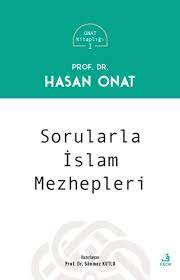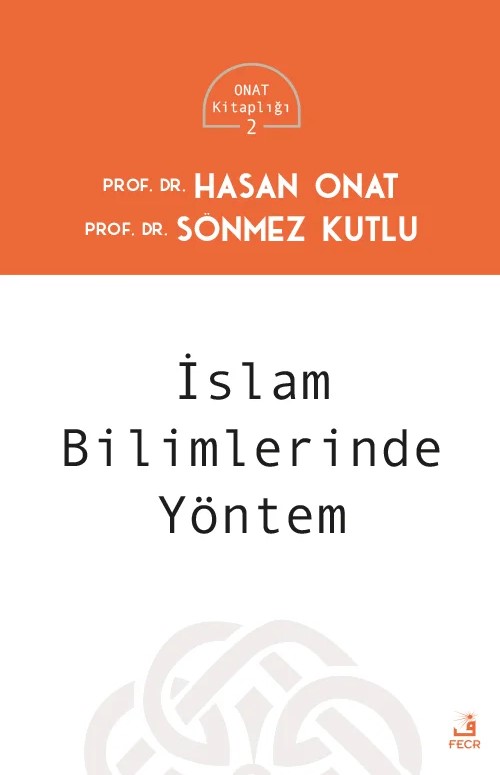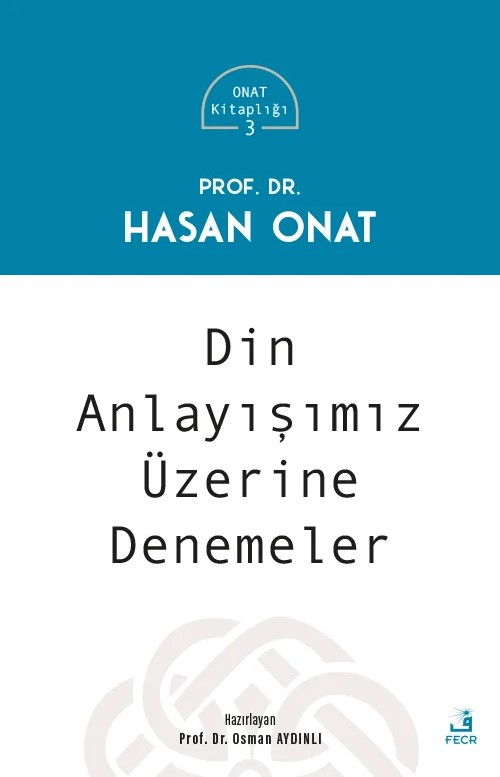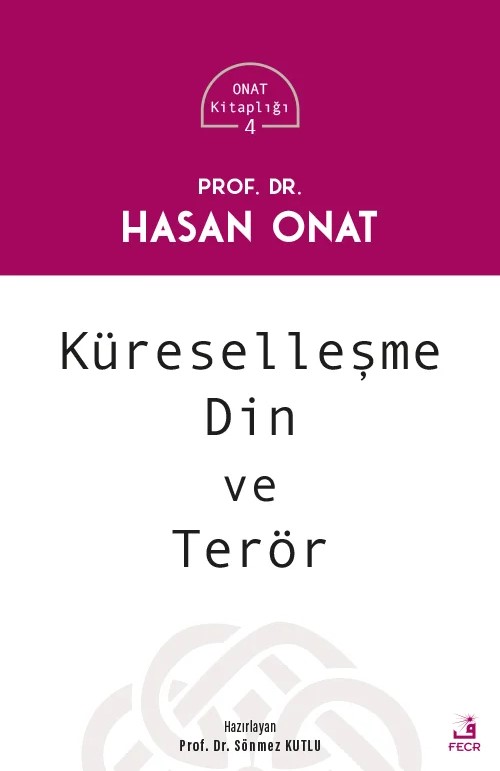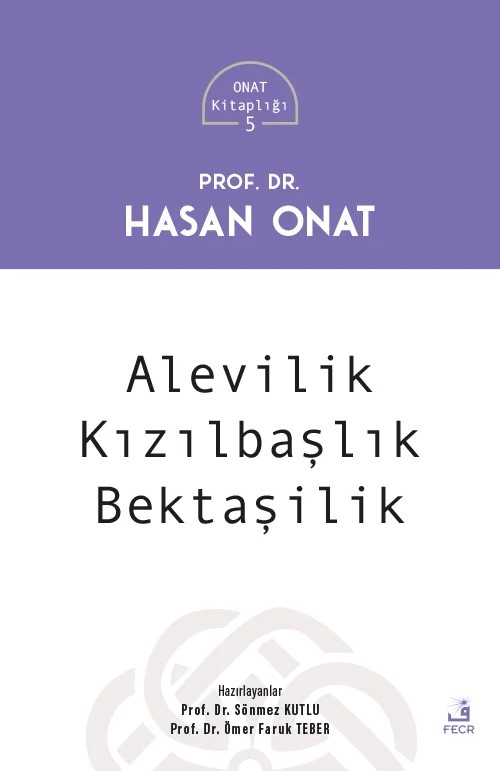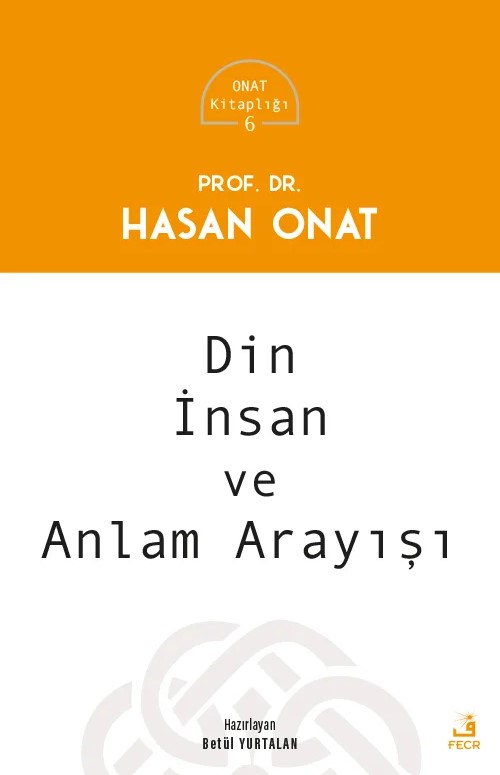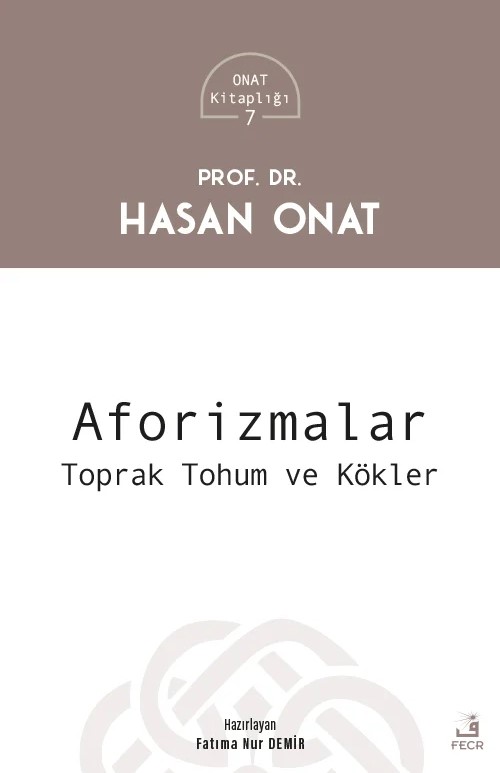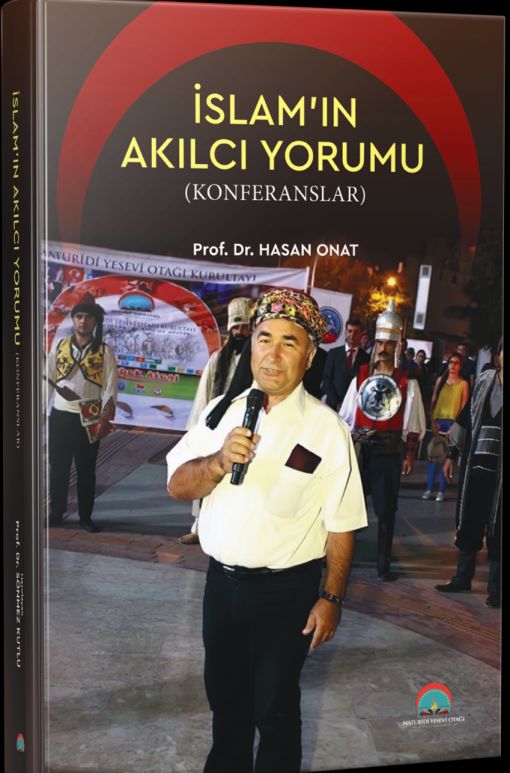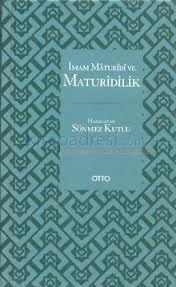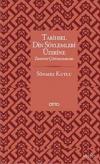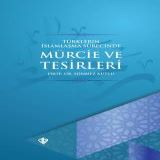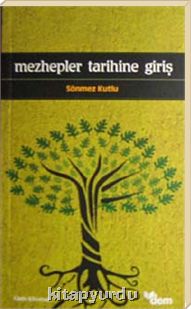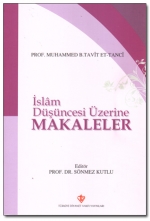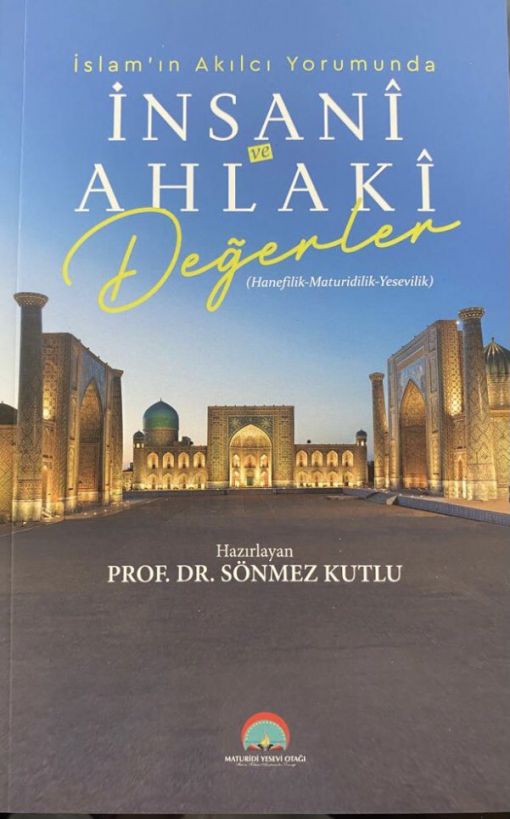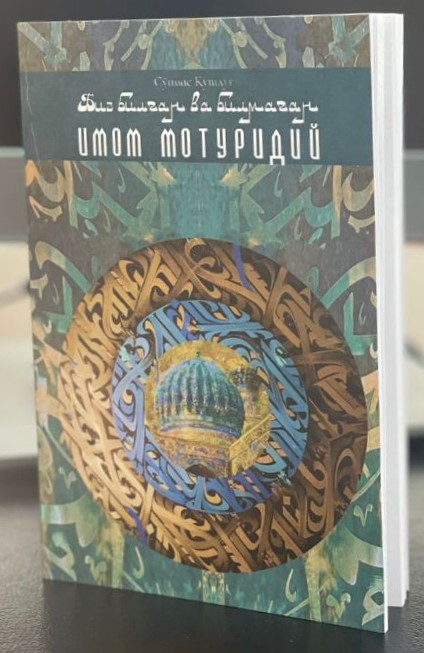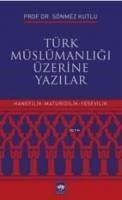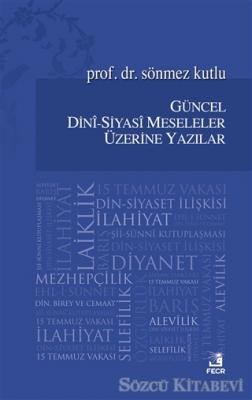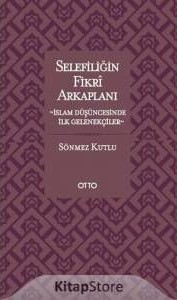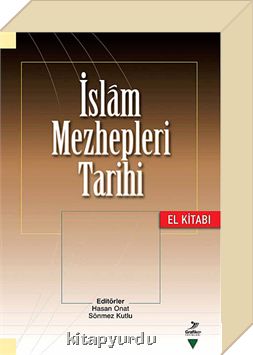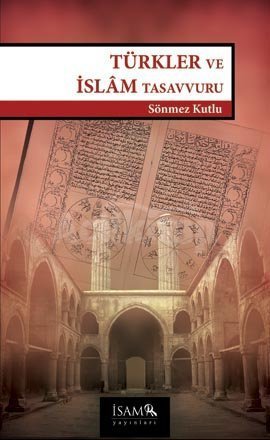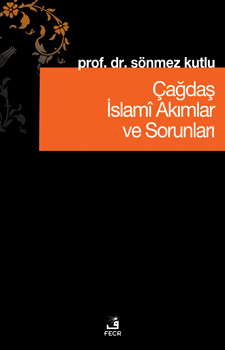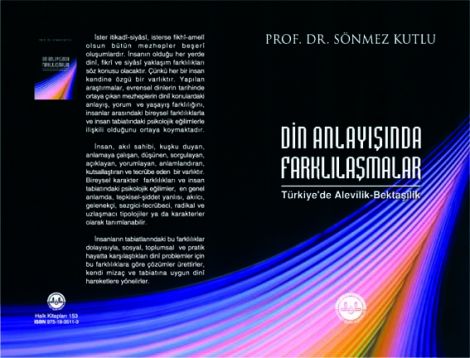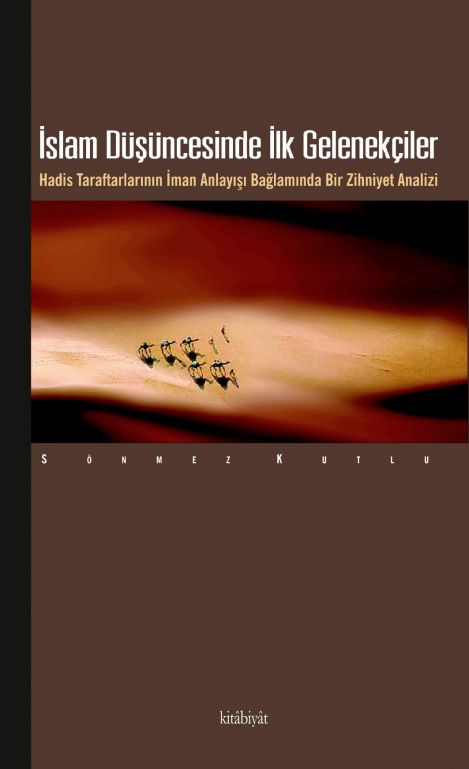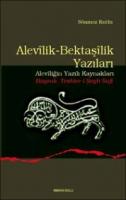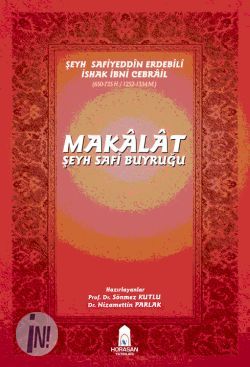Directory of Religious Affairs' Relation with Religious Groups (Sects/Sufi Orders) in Turkey
DIRECTORY OF RELIGIOUS AFFAIRS’ RELATIONS WITH RELIGIOUS GROUPS (SECTS/SUFI ORDERS) IN TURKEY
Prof.Dr. Sönmez KUTLU
Ankara University
Faculty of Theology
The Department of the History of Islamic Sects
Since there is no religious authority or institution in Islam, religious services were directed by those who are capable of doing these duties. However, in the history, religious services have been directed by the state and became under its control and protection. As far as Turkish experience is concerned, though it varies from period to period or from state to state, in the Ottoman Period, religious services and education were directed by sheikh al-Islam (the Chief religious official in the Ottoman Empire) on behalf of the Sultan. Although it can be claimed that the historical roots of Directory of Religious Affairs can be found in religious institutions of Ottoman Empire, if analyzed in terms of its duty and authority, the Directory is not the successor of the Ottoman religious institution. DRA (Directory of Religious Affairs) is an institution established in order to provide religious services under the general administrative services. It is neither sacred nor sanctified institution. It’s aim is to teach religious truth to the public, to protect secularism, to keep religion outside the realm of the politics, to control religious duties without giving monopoly to any religious groups, to strenghten the nation state and to protect religion from being exploited. It is often stated by the shcolars studying this subject that the main goal in the establishment of DRA is the control religion (Islam) and religious officials by the state rather than its protection on the one hand, and the protection of secularism on the other hand.
After the institutional and legal secularization of the state, the commands and rules of religion related to social conduct were annulled and the authority of legistlation was given to National Assembly. It is a well-known fact that in a democratic country, laws, legistlations and institutions must be based on social needs and requirements. Therefore, Turkish Republic decided to establish an institution to serve the need of religious services of the muslim population. Since the Turkish State realised the needs in the realm of worship and moral principles as equal to health and education, the DRA was established. By doing this, two things were aimed: first to give these services to everybody equally and properly, secondly not to allow spiritual leader or clergy to take control of these services. When discussing the proper name to be given to this new institution, several names such as, ‘religious affairs’ and ‘religious matters’ were suggested. In the end, they decided to establish an institution to serve the need in the field of belief, worship and moral principles – the last one was added later. From this angle, one can see the establishment of such an institution as legal and not contradictory to the secularism. The main issue is to give religious services properly and satisfactory.
DRA is a civilian institution in that it is not an institution representing any religious position on the one hand, it gives equally all muslim population accurete information based on clear teaching put forward in the Qur’an and in the sound Prophetic sayings. Nevertheless, in terms of its duty, its athority and the structure of its establishment, it is totally different from the similiar institutions in the West. It is well-known that the effects of the social crisis, intellectual clashes in the period of transition from the Empire to the republic can be seen in the discussions about the relation of religion to the state and legistlations related to the religious services and religious intitutions. The discussions about these issues today, which are more heated then they were before, are seen not only related to DRA but also became part of the social, political and economic problems of Turkey.
DRA has, from its establisment until today, two main duties: “to serve the religious need of the muslim population related to belief and worship” and “to regulate/to control the places worship”. With the amendment in the constitution of 1961, the statement “to regulate the issues related to moral princples” was added and DRA was given a new mission, namely “to enlighten the society on the religious issues.”
Until 1960s, DRA’s objectivity and unbiassed approach were not disputed, for it has been accepted that the DRA ”regulates the common principles of worship and belief” and “controls the common places of worship”. We know that the studies carried out under the control of DRA on the hadith and Qur’anic commentary were based on the principles of a specific Islamic sect, namely Sunnite especially Hanafite principles. Even this did not result in accusation of DRA of bias towards Sunnism. The famous Qur’anic commentary, Hak Dini Kur’an Dili, by Elmalılı Hamdi Yazır and Tecrid-i Sarih, a hadith commentary, has been accepted important works and were never regarded as biased Sunni Works. In the legistlation after the coup d’état in 1960, the neutrality of the DRA, fort he first time in its history, was put into question. In addition, some argued that “religious and secterian services could be regarded as a public service” and, accordingly, secterian and religious units in the DRA representing different religious denomination need to be established. The reason fort this discussion is primarily the idea that the DRA could not keep his netrality. This neutrality was based on main Islamic principles – belief, worship and moral principles – which were held before the emergence of Islamic sects.Yet, in the report prepared by a committe presided by Onar, the statement “ Turkish-Shiites needs which must be considered public service” may be understood to the effect that the demand of non-Sunni groups was considered public service. Nevertheless, whether this statement include Alawi-Baktashis and whether their demands were seen as public service is not clear, because, until that time, Alawi-Baktashis had been observing their religous duties by following Hanafi rites. In fact, after the transition to democracy, the DRA did not properly meet the needs of either Alawis or Sunnites or other religious groups. The first serious demands for religious representation, in fact, were pertaining to Alawism and Baktashism , which are rather Sufi orders, not related to Sunni groups. In 1963, in a proposal for the regulations about the establishment and functions of the DRA, the establishment of “the Directory of Relgious Sects” was suggested but not accepted on the ground that this could be understood as “officially paving the way of secterianism.” Many political scientist and scholars of law draw the attention to the possible negative results of giving priority to a certain group. In a symposium held by Cem Vakfı (Cem Faoundatition), Orhan Altıkaçtı, the chief architect of 1982 Constitution, stated that this proposal was rejected on the ground of national integrity.
These proposals which would make the DRA an institution representing various religious groups and sects were not accepted. Therefore, there is no effect of these approaches in the regulations of the DRA. This is also the case in 1982 Constitution and in the later legal amendments. To protect the DRA from being an institution in which various religious groups and sufi orders tries to take control, the article 136 of 1982 Constitution regulates the principles need to be followed:
“The DRA which is considered under the general administration, in line with secular principles, is an institution not belonging to any political affiliations, aims social solidarity and integrations and follows the regulations prescribed in the law.”
With this law, it is regulated that the DRA needs to be a neutral institution not belonging to any sect, political party or sufi order. In addition, with the article “aiming national integrity and solidarity”, the DRA was given a new role, i. e. to contribute national security. At the end of 1980s, with the influence of liberalism, the demands from the State in general and from the DRA in particular are increased and the discussion on the problem of representation is intensified. The Sunni sects, religious groups and sufi orders did not criticize the neutrality of the DRA but rather they criticized the DRA’s opposition to religious groups. In fact, some religious groups, by accusing the DRA of preventing the activities of their members tried to widen the sphere of activities. As for the Alawi-Baktashis accuse the DRA of serving only the needs of Sunnis and ignoring Alawi’s demands. Alawis polital and religious demands increased after the Islamic Revolution in Iran. There are other reasons which are Shiitization activities in Alawi circles, the activities of missionaries, the decrease of the Marxist influence in Alawi circles, the re-discovery of Alawi identity. So, following the article “to contribute national securty and integrity”, the DRA tried to find ways of meeting the demands of the Alawis. In fact, compared to the Sunnis, the Alawis benefitted from the services of the DRA though not equal to the Sunnis, and there is no obstacle to their demands. In period of Turkish Republic , the number of mosques increased in regions where Alawis live as it was the case in the Sunni circles. After 1980 military coup, the building of mosques in Alawi circles was encouraged and financially supported. The DRA whose religious services are mosque-oriented did not seriously attempt to recognize and discover the Alawis. It only appointed imams whose knowledge about Alawis was not adequate to the villages where there is no imams before. As far as the villages where there has been no mosque before are concerned, the DRA did not try to find alternative ways. In the Friday sermons, sermons, religious publications until the end of 1980’s, there were no mention of Alawism and Baktashism. On the other hand, there was almost no serious publication on these subjects. The first serious dialogue between the DRA and Alawis was in 1990’s when M. Sait Yazıcıoglu was the Director of the DRA. The subject of Alawism was the headline of offiicial periodical of the DRA, Diyanet Dergisi, XIII, January 1992. In this issue, the Alawi Dede (an Alawi religious functionary), Alawite and non-Alawite academicians put forward their ideas. But the reason behind this special issue was not the issue of freedom of speech and belief but rather the concept of security and the integrity of society. After the publication of this special issue, the DRA published few books related directly or indirectly to Alawism. Some Alawis wellcomed these attempts but the majority of Alawis considered them as ‘Sunnitization’ of the Alawis. In 1990’s, in Turkey and abroad, Alawis established foundations, associations and federations. They reorganized under the name Cemevi. The establishment of Cemevis whose religious and legal status was controversial, was the first major point of conflict between the DRA and the Alewis. The DRA’s regulation that Cemevi is not a general place of worship became the ground for the decision of some municipalities not to give the building sites arranged for the places of worship to Cemevi. With the new regulations in the process of accession talks with the European Union, there has been heated debates. The discussions about the DRA-Alawis relations, which was influenced by the political atmosphere in Turkey, was linked to the discussions of secularism. The issues under discussions were the legitimacy of the DRA in a secular system, The DRA’s relation to sects and sufi orders and its indifference to some of them, the representation of the Alawi-Baktashis in the ranks of the DRA, the allocation of funds to the Alawis from the budget, the position of the Cemevis etc. In the academic and non-academic circles, especially on the issue of the DRA-Alawis relations, several books, report and survey were published and symposiums were held. So, the question of how the DRA was to become democratic and civilian organization, whether the religious services was to be transferred to the religious movements and groups and whether this is a realistic demand have been discussed.
The Higher Committee of Religious Affairs, the highest decision and consultation authority, which was established in 1965 continued its activities after 1980s. This clearly contradicts with the neutrality of the DRA. The religious publications varying from the official periodical of the DRA Diyanet Dergisi, scientific and non-scientific publications were subjected to the control of this committee. Only after examining “whether these works are in accordance with the traditional Sunnite understanding” that the publication has been alllowed. The DRA is considered as an organization strictly following traditional Sunni understanding of Islam, for the verditcs and opinions of the Higher Committe were based on contingent and historical experiences not on the principles wich are prescribed in the Qur’an and are in accord with the spirit of the modern age. The committee’s answers to the question asked by an Alawi Dede in accordance with the traditional Sunni-Shi’i binary opposition is a good example of the point we are trying to emphasize. On being asked why the the temporary marriage (mut’a nikahı) is not allowed, the committee answered by following historical Sunni reasoning totally disregarding the fact that this question was asked by an Alawi and that for him there are totally different political and sociological reasons behind his defending of the legitimacy of the temporal marriage. Beginning with the Safawids and continuing through the modern period, the translation of the Shiite Works into Turkish meant the continuation of the growing influence of Shiism on Alawism. Because in the authentic Alawi understanding, it is impossible to defend the temporal marriage. The questions from people following diffferent religious affiliations can be answered properly only by those who specialized the history of the sects and sufi orders. Unfortunately, in the committee, there is no enough specialists on these issues. The surveys indicate that the imams appointed to the Alawi villages have no adequate knowledge about Alawism and Baktashism due to inadequate education in the religious high schools and divinity schools. The subject of Alawism in the curriculum of the religious high schools was included in 2007. Furthermore, the graduate of these schools were not educated about the Alawism either before their appointment or after it. This results in the lost of confidence to these imams in Alawi villages. Therefore, to meet their demands, the Alawis of these villages tried to find alternative ways. This led to the establishment of new institutions cliamed to be an alternative to the mosque and to the DRA.
“The DRA’s relations with the religious groups” in general and “DRA-Alawis relations” and “DRA-Jafaris relations” in particular are the major issues which are being discussed recently. Regardless of which sect, group or sufi orders they belong to, the expectations of everybody including Alawi-Baktashis from the DRA is to provide religious services of good quality to meet their demands. However, today the services of the DRA are insufficent. Although there are some legal reasons fort this, the main reason is that the DRA was organised years ago and it is impossible to expect from such an organisation to provide services to 70 million people. Because, today, religious services are diversified and different ways of communcations emerged. So, it is a mistake to reduce the DRA-Alawis relation to the issue of the latter’s representation in the ranks of the DRA. The main problem is not “the issue of the representation of the Laws in the DRA but rather the fact that the DRA, due to its inadequate units and services on the one hand and the lack of well-educated religious officials to be appointed in Alawi circles, can not find proper ways of communications with the Alawis.
Fort the representations of the DRA in all religious-social organizations, we neeed new radical legistlative changes to redifine the units under its authority and creat new ones as the new demands emerge. But priority must be given to the neutrality, autonomy and the freedom of the DRA from any political pressures. This will make the state a properly secular state. In Turkey, there is an attempt, fort the sake of secularism, to confine religion to conscience of the individuals or to the private life of the individual on the one hand, to the certain places on the other. This is so much so that secularism, let alone becoming guarantee of the freedom of religion and speech, turned out to be something that limits religious freedoms and an idealogy leading to the emergence of the clergy. As long as religion and secularism are not freed from being the means of conflict, as long as the legal system continue to bypass the politics and as long as the mutual undesrtanding in the society is not realised, it is impossible to find solutions to the problems in the relations of the state with religion. For all these problems, the radical legistlative changes are crucial for freeing the DRA from the pressure of the politics and helping the DRA to provide different sectors of the society services that they need. Otherwise, this will lead to the emergence of rival DRAs.
The idea that Alawis must be represented in the DRA is not shared, contrary to what is assumed, by all the Alawis. Their ideas on this issue vary. In fact, all Alawi associations, foundations, tekke (derwish lodge) consider this issue from a different angle. However every group tries to present their ideas as if they are shared by the majority of Alawis. On the other hand, their demands are essentially different from the ones we have seen since the establishment of the republic.
Among the reasons why the Alawis levelled criticisms againgst the DRA are the attempts to recover authentic Alawism, expectations of religious service from the DRA, the lack of services on the part of the DRA, the promises made by some political parties, such as supporting the building of Cemevi and allocation of a share from the national budget, the attempt of some circles to present the Allawis as a counter group against political Islam, the endeavor of the Alawis to be free of the influences of illegal organizations. The fact that the basic human rights recently became, especialy after the signing of some treatments, an international issue rather than an interior promlem is another reason why the Alawis are levelled criticisms againgst the DRA. Bearing all these in mind, the DRA made some serious attempts and tried to find ways of building mosques and similiar things in the regions (like Tunceli) where the Alawis live. Therefore, the DRA, by negotiating some Alawi religious figures (dede), tried to determine their demands. However, this attemp is presented by the media as Alawis’ representation in the DRA and this dominated the debates around this issue. Alawis’ demands for the status of the DRA can be categorized under four headings:
a. Reorganization of the DRA and the Representation of the Alawis in the DRA
This new model is proposed by the Director of the Cem Vakfı (Cem Foundation) Izzettin Dogan, the leading figures with him and some Dedes (Alawite religious figure). They claim that the DRA is not in agreement with Alawite tradition, Alawite thought and the concept of secular state, and that the DRA do not fullfill its duties and responsibilities given by the state and did not provide the religious services to all muslims in an equal way. Therefore, they demand that the DRA needs to be a free, autonomous organization not controlled by anyone. They also demand that the DRA needs to reorganized under the name of the Organization of Religios Services, which is supposed to be an umbrella organization encompassing different religious groups in the country. For them, in this new organization, there must be seperate units enabling different religious affiliation to be represented. They want the Alawis to be represented in this new organization. However, in the course of time, their discourse has changed. They do not want to abolish the DRA, which is a given reality in the country, but rather they demand reassessing of the situation and the reorganization of the DRA.
The Cem Vakfı held an international symposium “Din devlet İlişkileri ve Türkiye’de Din Hizmetlerinin Yeniden Yapılanması (Religion-state Relations in Turkey and the Reorganization of Religious Services in Turkey), in 26-27 March 1996 to draw the attentions of the politicians and the various institutions of the state to the issue of the representation of the Alawis in the rank of the DRA. In this symposium, Dogan proposed that “Not only Alawis, our Sunni brothers on the one hand but also our Jewish and Christian brothers on the other hand everybody in Turkey must be represented in the ranks of the DRA. Furthermore, these groups must democratically be represented in accordance with their population totally without taking any concept of hierarchy into account since it is known that there is no hierarchy in the religious issuues.” When their demand of representation was denied, in 27 December 2003 the Chairman of Cem Vakfı, Izzettin Dogan that they had established an organization called the Directory of Alawite-Islamic Religious Services. However, The Alawi organizations in general and The Confederations of the Alawi Unions in Europe in particular rejected such an initiative.
b. The Abolition of the DRA:
The majority of the Alawi organizations both in Turkey and in Europe share this idea. The organizations supporting this idea are Pir Sultan Abdal Dernekleri (Pir Sultan Abdal Associations), Hacı Bektaş Veli Dernekleri (The Associations of Hacı Baktaş Veli), The circle of The Foundation of Samah Culture, The Dervish Lodge of Karaca Ahmet and Kurdish Alawi Cultures. For these groups, “the DRA is an institution against the concept of secularizm adopted by the state. As long as this sitution continues, the claim that Turkish state is secular is baseless. What needs to be done is to abolish the DRA.” Veliyyiddin Ulusoy, belonging to the Dedegan Branch also called as Celebi sor Ulusoys – subgroups of Haci Bektash Wali Lodge-, says that “Alawis have nothing to do with the DRA. It is an institution founded by the state and follows the Sunnite approach. For me, every religious group must be given the right to establish their institution and finance it. The state has to stop supporting the DRA. We do not need the DRA. Every group can solve their problem. The state can only the arbitrator.”
c. Let the DRA stay and let the Alawis be represented
The idea of the representation of the Alawis by an elderly Dede in the DRA and also the appointment of a Dede in the Office of the mufti in the cities and towns.
d. The Demand fort the establisment of Alawite Directory of Religious Affairs
The supporter of this idea the Alawite Directory of Religious Affairs must be autonomous and, as far as financial issues are concerned, the financial issues must be under the control of the state. Furthermore, the expenditure of this organization must be given from the national budget.
The last two are only ideas of some indivuluas.
In 1990’s, the Alawi-Baktashis in the rural areas were confusion about the issue of the representation in the DRA. There was even different opinions among the male and female residents in the villages. With the wellcoming of the Cemevis, both in the cities and in the villages, in recent years the situation seems to be changing. In 2005, in a socialogical survey analyzing “The Problem of teh Representation of the Alawis in the DRA” the % 74 of the Alawis want to be represented and to be given religious services while % 26 of them reject the representation and religious services.”
Although all Alawi-Baktashis want to be represented in the DRA, national and international laws do not allow the representation of the sufi orders and sects especially the Alawis in the DRA.
In the discussion of the Alawis in the DRA, three crucial issues which are very important fort the Alawis are arised: First, what is the Alawism? Secondly, what kind of status is supposed to be given to the Alawis in the rank of the DRA? Thirdly, who will represent the Alawis?
The first and the second question are related to the esence of the Alawism and Baktashism. For some researchers, Alawism-Baktashism is a religion while for others sect. On the other hand some claim that it is a secular democratic and national belief system or sufi order. There are also some scholars claiming that it is Turkish way of understanding Islam or is a way of life. Sociaological researches show that even those who define themselves as Alawi are in difficulty in defining what Alawism is and put forward various definition of it.
The question of who will represent the Alawis is also problematic one. Today, there are various Alawi-Baktashi groups such as those who follow Ocakzade Dedeler branch, those following Dedegan (Celebiler) Branch, those following Babagan (Babalar) Branch and those who do not follow any religious authority. The main problem regarding who will represent the Alawis is the role of the Alawi Foundatins and Associations organized in Europe because some of these groups define Alawism as Alawism without Ali or as non-Islamic religion. For others, Alawism is equal to Marxism, or it is the religion of the Kurds. There are also some groups claiming that the real Alawism is the Alawism of Ahl al-Bayt (the House of the Prophet), namely Shiism. They see themselves as the sole representatives of the Alawism. It seems that there are totally different, sometimes conflicting, perceptions of Alawism. Given these different and opponent Alawi subgroups, the representation of the Alawism in the DRA by one single group or person seems to be impossible and these groups are against such representation.
The uncertainty about the religious, social and legal status of the Cemevis, the newly emergent places of worship, is another obstacle to solve the problem of the representation of the Alawis in the rank of the DRA. Concerning the status of the Cemevis in terms of religious point of view, some Alawi-Baktashis point out that they are not alternatives to mosques but rather culture houses while others claim, by distorting the historical facts, that cemevis are the alternative places of worship to the mosques. On the other hand, there are some assuming that Alawism is a sepetrate religion nothing to do with Islam and Cemevis are the places of worship fort this religion. Given all these, the question of whether the status to be given to these places is the status of Derwish Lodges or the status of a place of worship of a seperate religion is a significant one. Giving them the status of Derwish Lodges means opposing the Laws of the Revolution. Before doing this, all other Derwish Lodges need to be legalized because for the time being Cemevis are opened under the Laws of Foundations and Associations. According the present Laws and regulations, the DRA can not help the Cemevis and appoint Dedes since it has no authority to do that. Given the ideological use and abuse of these places, even the DRA is granted such an authority, to what extend the DRA can control them is stil doubtfull. To see Alawis as a seperate religion and Cemevis as a places of worship of this religion is different issue needs to be discussed out of the context of the DRA-Alawis relations.
As it was the case in the demands of the Alawis on representation after the year of 1960, today, the Alawis are not in agreement on their realistic demand of representation. In 1990’s, they were demanding everthing from the DRA without knowing whether it was legally authorotized on these issues. New researches indicate that Alawis in rural areas are more concerned with religious issues, that their demands are realistic and that they demand from the DRA more religious services. These servives are educating religious functionaries to lead the religious ceremonies, building cemevi, their exemption from paying electricity and water bill, the share from the budget allocated to the religious services, % 30 permanent staff positions to be employed in the field of religious services, the Ahl Bayt Celebrations to be organized for 10-15 days in Muharram and the teaching of Alawism in religious sermons.
If they want, Alawis, in the rural and urban areas, benefit from the services of the mosques functionaries such as funeral services, marriage ceremony, reciatation of the Qur’an. Yet, with institutionalizing of the Cemevis, it seems that funeral serevices were carried out in the Cemevi rather than in the mosque. As fort the building of the Cemevi, it is well known that the DRA has no duty of building either mosque or cemevi. It was the people who build the mosques. Following the law, the responsibility of the DRA appoint an imam and control these mosques. The demand for % 30 of the budged allocated to the religious services is not a realistic one. In no public institution in Tukey, the allocation were made according to the religious affiliations. On the other hand, fort he appointments to the religious posts, the certificate of religious high schools and divinity schools is required. Anybody with these certificates can apply for a job in the DRA subjected to passing the exam. The officials of the DRA stated in various occasions that several Alawis are serving in the different units of the DRA.
Sociological studies carried out in the past and in our days clearly indicate that Alawi-Baktashis benefit from the services of the DRA, though not as much as the Sunnis do. On the public opinion polls about to what extend Alawis benefit from the services of the DRA, it is pointed out that mosque oriented religiosity both in Sunni and Alawi circles decreased. Therefore limited numbers of people benefit from the services of the DRA.
The Alawi villages with mosque benefit from the services of the DRA and imams are appointed there. It is also found out in the polls that Alawis, though not as much as Sunnis, Alewis also attend daily prayers, friday prayers and congregational (ıyd) prayers. It is also indicated that the number of the Alawis attending Cemevi recently decreased.
The fact that the DRA, by carrying out scientific reseraches, did not find out by scientific ways the religious demand of the Alawis and published religious works to illuminate them in accordance with their need is the most serious mistake of the DRA. In a public survey, it is indicated that in spite of all these ideological distortions, 10.72 % of sincere and devoted Alawi-Baktashis wish that their children could recite and understand the Qur’an. Needless to say that, the DRA is under obligation to meet this need. The DRA has to find a new way of dealing with these demans giving up confining religious services to the mosques. To meet this demand, the DRA may appoint Qur’an teachers to Cemevi or appoint the specialists in religious affairs to meet the various demands of the Alawis.
In the era of Ali Bardakoglu, the Director, The DRA – Islamic groups relation in general and the DRA – Alawis relations in particular are considered on the basis of the secularism and freedom, probably because of his education in the field of law. Especially in his speech in the country and abroad, Bardakoğlu emphasizes the legitimacy of the DRA in a secular country by using different reasoning not seen before. For him, the DRA has three major characteristics:
“ There are three basic characteristics for the Presidency as public institution. First, it is a public institution; it provides its services within the framework of the Constitution and the laws. Second, it is a free institution; it puts a special emphasis on producing religious knowledge in a free atmosphere. Third, it is a civil organization; that is to say, it takes seriously the accumulated religious experiences of the people and their requests, and it provides the most suitable services for them. Due to these three characteristics, as a constitutional, free, and civil organization, the Presidency is able to function and serve in harmony with the secular principles and implications of the freedom of religion.”
The first characteristic, though is in line with the mission of the DRA in its first regulation, has still problems in practice and services with all the laws of the state, Constitution, secularism. The verdict of the High Court regarding the DRA put the legitimacy into question. The DRA regulations over Qur’anic Schools were rejected by the President. The other two characteristics of the DRA are only the heartfelt wish of Bardakoglu. The second characteristic, producing religious knowledge in a free atmosphere, is not included in the responsibilities and authorities of the DRA. In a sense, his statements can be seen as a new definition of the duties and responsibilities of the DRA. It is to be noted that the administrators of the DRA, including the Director himself, are appointed by the ruling parties and, therefore, can be changed by the other parties. As long as the director, mufti (official learned in Islamic law who is in charge of Islamic affairs for a province / district) are appointed by the political authorities, not elected in a free election, and the knowledge is controlled by the Higher religious Affairs Committee, it is difficult to claim that the DRA ‘produces free knowledge’. Furthermore, it is impossible to produce knowledge through a committee, for the free and reliable knowledge can be produced only by scholars and institutes. Therefore, the production of free knowledge is the responsibility of Divinity Faculties. The DRA must illuminate the public by using this knowledge. Given the DRA’s proposal for establishing Academy of Religious Affairs, Haseki Education Centres, Qur’anic Schools/Courses and similar services, it seems that the DRA aims at taking over the authority and responsibility of the Sheikh al-Islamlik ( the office of the chief religious official in the Ottoman Empire). The civil character of the DRA, compared with the other two, is the most problematic one. The third characteristic, which is “it is a civil organization; that is to say, it takes seriously the accumulated religious experiences of the people and their requests, and it provides the most suitable services for them” contradicts with the neutrality and its principle that “the DRA follows in his services on the issue of belief, worship and moral principles without depending on a specific sect or group or in the frame of indoctrinal”. There is a contradiction because if the DRA takes into consideration the living experience of the believers, it will have to provide services, say, to Alawis and Jafaris in accordance with their experience on the one hand, to the Shafiites according to their experience on the other. This entails in recognizing the Cemevi as the place of worship. The civil character of the DRA must be based on the religiosity Islam propose rather than taking into account the living experience of a certain group, a sufi order and clergy. Therefore, these three characteristics can only be materialized by transforming the DRA into civil, democratic an autonomous organization. For this, there must be a radical legal changes.
Under the management of Ali Bardakoglu, in religious services and managerial practices, especially in the DRA-Alawi relations, there are some new changes though these are regarded by the Alawis as a Sunnitization project. The Muharram fasting, the Ashura, the martyrdom of Husain in Karbala, Ahl al-Bayt (The House of the Prophet), the life of Ali and his services to Islam began to be mentioned the Friday sermons, sermons, The DRA’s official periodical, the DRA’s official calendar. In the last two years, the subject of The Prophet and The love of the House of the Prophet was included in the ceremonies the Week of the Blessed Birth, which is annual celebration of the Prophet Muhammad and is organized under the control of the DRA. The special edition of the DRA’s official periodical Diyanet Dergisi which was devoted to the subject of “the Love of the House of the Prophet” was later published by the DRA Press as a separate booklet. On the other hand, the DRA began the publication of “the Alawi-Baktashi Classics.” According to unofficial statements of the DRA officials, the publication of 17 Alawi manuscripts were planned. Fisrt, these works were planned to be published by the DRA Press, but some academicians and some members of Higher Committee of Religious affairs objected. Therefore, these books were published by Diyanet Vakfı Press (Diyanet Foundation Press). Of these manuscripts, the four has been published so far. In a special courses organized by DRA, the muftis of the big cities and towns, preachers, the teachers of Qur’anic schools, and the imams were educated in the subject of Alawism and Baktashism. In the celebration of the Celebration of the Blessed Birth, the office of mufti in some big cities and towns, coordinated some activities with some Alawite Foundations and Assocaitions. In the week of the Celebration of the Blessed Birth and the Muharram Celebrations DRA co-organized some activities with the Alawis. Even some Alawi leaders (dede) were sent to abroad to join the Week of Blessed Birth of 2007
Another group whose relation with the DRA is to be analyzed is Jafaris. They, as the Alawis, do not want to be represented in the ranks of the DRA. The DRA’s presentation of the Jafaris as a political non-Sunnite sect which follows Shiites-İmamis rite in law is not accepted by the Jafaris. The claim that the DRA tries to transform the DRA and making them Sunnites and accuses them pro-Iranian was also put forward by the Jafaris. In an interview published in Caferiyol Yol (Caferi Way), Ali Bardakoglu gives positive messages to the Jafaris by saying that “Jafarism is a rite based on the ideas of the followers of the great scholar of Islam and man of letters Imam Jafar al-Sadık and the opinions of his followers. The duty of our directory is to provide religious services to the people and meet their demands. It is a neutral institution and does not disciriminate in favour of a special religious group, sect or a sufi order.” These explanations did not change Jafaris’ perception that the DRA is not an institution representing all the muslims in Turkey; on the contrary, it represents Sunni approach and its attitute to the Jafaris is a partial one.
The DRA-Jafaris relations in recent years began to detoriorated compared to previos years. The reason for this is the requirement of the DRA’s official permission for building a mosque. This is regulated with the first article of the regulation dated 31.07.1998 ( reference number 4379) . In the 35 of the Regulations of the Establishment and Duties of the DRA (referenced 633) is stated that “the opening of the big and small mosques are subjected to the permission of the DRA and these mosques are controlled by the DRA”. The mosques built either by the individuals and juristic personality and opened to worship will be taken over by the DRA”. The DRA employ religious officials for these mosques. Until staff were employed there, the qualifications of the staff to serve in these mosques are arranged in the regulations.” After this regulation, all the Jafari mosques became under the authority of the DRA. As Bardakoglu states, the officials serving in these mosques are “voluntary imams”. The Directory are planning to appoint them permanently or temporary depending on their age, eduacation and other qualifications.” These mosques are built by the public or by some associations and the imams were choosen by the Jafaris themselves. Fort the time being, the DRA do not appoint imams for these mosques. The Jafaris still choose their imams and their salaries are paid by the Jafari associations.
The relations of Alawi-Baktashis, Jafaris and the other groups to the DRA depend on the expectations of these groups and their realistic proposals and remedies. Accordingly, one can expect from the DRA to establish new units and servies to meet these needs. According to the surveys recently carried out points out that these are not only the demans of the Alawis and Jafaris but also that of the Sunnis. Especially the young Sunni generations criticize the DRA for not providing adequate religious education. The reorganization the DRA is the demand of all groups in Turkey. Before attemting to the reorganization, various religious groups, by conducting field works, must put forward their realistic demands. Yet, the most important than this is the fact that these religious groups need to face the traditional understanding of religion. Both Alawis and Sunnis hold that keeping the traditional way of understanding religion makes them beter believer or more religious. But, the modern societies living in an era which witness rapid and radical changes, began to loose their belief in the validity of traditional understandings. Religious group and the DRA, following the experience of the Prophet, need to reinterpret religion without following the understanding of any sect. This means to go back to the common values emerging before the early sects.
The surveys indicate that in our days the DRA do not provide equal and adequate services and that due to some legal difficulties do not carry out its duties as regulated in its regulations. To solve this problem, all, including the Director himself, the people expecting services from the DRA, state that the DRA needs to be reorganized, civilized and freed. To this effect, several goverment asked the DRA to make research. Some proposals for reorganizing the DRA under the authority of the political authority still remained as propasals in the sub-commissions wating to be sent to the Genaral Assembly. Those proposals discussed in the General Assembly were rejected by one of the member of the coalision government. In fact, we still wait a clear new proposal to be discussed in public. Given the fact that the structure of the traditional religious societies are dissolving, we need to carry out sociological, theological, psyhological and legal surveys to determine the demands of the society, which are considered public service. Furthermore, new religious movements and their new concepts of civilian religious services emerged. After these developments, taking into account the needs of the socio-religious organizations, it is essential this organization needs to be reorganized as an civilian and autonomous institution of religious services.
Prof.Dr. Sönmez KUTLU
Ankara University
Faculty of Theology
The Department of the History of Islamic Sects
Since there is no religious authority or institution in Islam, religious services were directed by those who are capable of doing these duties. However, in the history, religious services have been directed by the state and became under its control and protection. As far as Turkish experience is concerned, though it varies from period to period or from state to state, in the Ottoman Period, religious services and education were directed by sheikh al-Islam (the Chief religious official in the Ottoman Empire) on behalf of the Sultan. Although it can be claimed that the historical roots of Directory of Religious Affairs can be found in religious institutions of Ottoman Empire, if analyzed in terms of its duty and authority, the Directory is not the successor of the Ottoman religious institution. DRA (Directory of Religious Affairs) is an institution established in order to provide religious services under the general administrative services. It is neither sacred nor sanctified institution. It’s aim is to teach religious truth to the public, to protect secularism, to keep religion outside the realm of the politics, to control religious duties without giving monopoly to any religious groups, to strenghten the nation state and to protect religion from being exploited. It is often stated by the shcolars studying this subject that the main goal in the establishment of DRA is the control religion (Islam) and religious officials by the state rather than its protection on the one hand, and the protection of secularism on the other hand.
After the institutional and legal secularization of the state, the commands and rules of religion related to social conduct were annulled and the authority of legistlation was given to National Assembly. It is a well-known fact that in a democratic country, laws, legistlations and institutions must be based on social needs and requirements. Therefore, Turkish Republic decided to establish an institution to serve the need of religious services of the muslim population. Since the Turkish State realised the needs in the realm of worship and moral principles as equal to health and education, the DRA was established. By doing this, two things were aimed: first to give these services to everybody equally and properly, secondly not to allow spiritual leader or clergy to take control of these services. When discussing the proper name to be given to this new institution, several names such as, ‘religious affairs’ and ‘religious matters’ were suggested. In the end, they decided to establish an institution to serve the need in the field of belief, worship and moral principles – the last one was added later. From this angle, one can see the establishment of such an institution as legal and not contradictory to the secularism. The main issue is to give religious services properly and satisfactory.
DRA is a civilian institution in that it is not an institution representing any religious position on the one hand, it gives equally all muslim population accurete information based on clear teaching put forward in the Qur’an and in the sound Prophetic sayings. Nevertheless, in terms of its duty, its athority and the structure of its establishment, it is totally different from the similiar institutions in the West. It is well-known that the effects of the social crisis, intellectual clashes in the period of transition from the Empire to the republic can be seen in the discussions about the relation of religion to the state and legistlations related to the religious services and religious intitutions. The discussions about these issues today, which are more heated then they were before, are seen not only related to DRA but also became part of the social, political and economic problems of Turkey.
DRA has, from its establisment until today, two main duties: “to serve the religious need of the muslim population related to belief and worship” and “to regulate/to control the places worship”. With the amendment in the constitution of 1961, the statement “to regulate the issues related to moral princples” was added and DRA was given a new mission, namely “to enlighten the society on the religious issues.”
Until 1960s, DRA’s objectivity and unbiassed approach were not disputed, for it has been accepted that the DRA ”regulates the common principles of worship and belief” and “controls the common places of worship”. We know that the studies carried out under the control of DRA on the hadith and Qur’anic commentary were based on the principles of a specific Islamic sect, namely Sunnite especially Hanafite principles. Even this did not result in accusation of DRA of bias towards Sunnism. The famous Qur’anic commentary, Hak Dini Kur’an Dili, by Elmalılı Hamdi Yazır and Tecrid-i Sarih, a hadith commentary, has been accepted important works and were never regarded as biased Sunni Works. In the legistlation after the coup d’état in 1960, the neutrality of the DRA, fort he first time in its history, was put into question. In addition, some argued that “religious and secterian services could be regarded as a public service” and, accordingly, secterian and religious units in the DRA representing different religious denomination need to be established. The reason fort this discussion is primarily the idea that the DRA could not keep his netrality. This neutrality was based on main Islamic principles – belief, worship and moral principles – which were held before the emergence of Islamic sects.Yet, in the report prepared by a committe presided by Onar, the statement “ Turkish-Shiites needs which must be considered public service” may be understood to the effect that the demand of non-Sunni groups was considered public service. Nevertheless, whether this statement include Alawi-Baktashis and whether their demands were seen as public service is not clear, because, until that time, Alawi-Baktashis had been observing their religous duties by following Hanafi rites. In fact, after the transition to democracy, the DRA did not properly meet the needs of either Alawis or Sunnites or other religious groups. The first serious demands for religious representation, in fact, were pertaining to Alawism and Baktashism , which are rather Sufi orders, not related to Sunni groups. In 1963, in a proposal for the regulations about the establishment and functions of the DRA, the establishment of “the Directory of Relgious Sects” was suggested but not accepted on the ground that this could be understood as “officially paving the way of secterianism.” Many political scientist and scholars of law draw the attention to the possible negative results of giving priority to a certain group. In a symposium held by Cem Vakfı (Cem Faoundatition), Orhan Altıkaçtı, the chief architect of 1982 Constitution, stated that this proposal was rejected on the ground of national integrity.
These proposals which would make the DRA an institution representing various religious groups and sects were not accepted. Therefore, there is no effect of these approaches in the regulations of the DRA. This is also the case in 1982 Constitution and in the later legal amendments. To protect the DRA from being an institution in which various religious groups and sufi orders tries to take control, the article 136 of 1982 Constitution regulates the principles need to be followed:
“The DRA which is considered under the general administration, in line with secular principles, is an institution not belonging to any political affiliations, aims social solidarity and integrations and follows the regulations prescribed in the law.”
With this law, it is regulated that the DRA needs to be a neutral institution not belonging to any sect, political party or sufi order. In addition, with the article “aiming national integrity and solidarity”, the DRA was given a new role, i. e. to contribute national security. At the end of 1980s, with the influence of liberalism, the demands from the State in general and from the DRA in particular are increased and the discussion on the problem of representation is intensified. The Sunni sects, religious groups and sufi orders did not criticize the neutrality of the DRA but rather they criticized the DRA’s opposition to religious groups. In fact, some religious groups, by accusing the DRA of preventing the activities of their members tried to widen the sphere of activities. As for the Alawi-Baktashis accuse the DRA of serving only the needs of Sunnis and ignoring Alawi’s demands. Alawis polital and religious demands increased after the Islamic Revolution in Iran. There are other reasons which are Shiitization activities in Alawi circles, the activities of missionaries, the decrease of the Marxist influence in Alawi circles, the re-discovery of Alawi identity. So, following the article “to contribute national securty and integrity”, the DRA tried to find ways of meeting the demands of the Alawis. In fact, compared to the Sunnis, the Alawis benefitted from the services of the DRA though not equal to the Sunnis, and there is no obstacle to their demands. In period of Turkish Republic , the number of mosques increased in regions where Alawis live as it was the case in the Sunni circles. After 1980 military coup, the building of mosques in Alawi circles was encouraged and financially supported. The DRA whose religious services are mosque-oriented did not seriously attempt to recognize and discover the Alawis. It only appointed imams whose knowledge about Alawis was not adequate to the villages where there is no imams before. As far as the villages where there has been no mosque before are concerned, the DRA did not try to find alternative ways. In the Friday sermons, sermons, religious publications until the end of 1980’s, there were no mention of Alawism and Baktashism. On the other hand, there was almost no serious publication on these subjects. The first serious dialogue between the DRA and Alawis was in 1990’s when M. Sait Yazıcıoglu was the Director of the DRA. The subject of Alawism was the headline of offiicial periodical of the DRA, Diyanet Dergisi, XIII, January 1992. In this issue, the Alawi Dede (an Alawi religious functionary), Alawite and non-Alawite academicians put forward their ideas. But the reason behind this special issue was not the issue of freedom of speech and belief but rather the concept of security and the integrity of society. After the publication of this special issue, the DRA published few books related directly or indirectly to Alawism. Some Alawis wellcomed these attempts but the majority of Alawis considered them as ‘Sunnitization’ of the Alawis. In 1990’s, in Turkey and abroad, Alawis established foundations, associations and federations. They reorganized under the name Cemevi. The establishment of Cemevis whose religious and legal status was controversial, was the first major point of conflict between the DRA and the Alewis. The DRA’s regulation that Cemevi is not a general place of worship became the ground for the decision of some municipalities not to give the building sites arranged for the places of worship to Cemevi. With the new regulations in the process of accession talks with the European Union, there has been heated debates. The discussions about the DRA-Alawis relations, which was influenced by the political atmosphere in Turkey, was linked to the discussions of secularism. The issues under discussions were the legitimacy of the DRA in a secular system, The DRA’s relation to sects and sufi orders and its indifference to some of them, the representation of the Alawi-Baktashis in the ranks of the DRA, the allocation of funds to the Alawis from the budget, the position of the Cemevis etc. In the academic and non-academic circles, especially on the issue of the DRA-Alawis relations, several books, report and survey were published and symposiums were held. So, the question of how the DRA was to become democratic and civilian organization, whether the religious services was to be transferred to the religious movements and groups and whether this is a realistic demand have been discussed.
The Higher Committee of Religious Affairs, the highest decision and consultation authority, which was established in 1965 continued its activities after 1980s. This clearly contradicts with the neutrality of the DRA. The religious publications varying from the official periodical of the DRA Diyanet Dergisi, scientific and non-scientific publications were subjected to the control of this committee. Only after examining “whether these works are in accordance with the traditional Sunnite understanding” that the publication has been alllowed. The DRA is considered as an organization strictly following traditional Sunni understanding of Islam, for the verditcs and opinions of the Higher Committe were based on contingent and historical experiences not on the principles wich are prescribed in the Qur’an and are in accord with the spirit of the modern age. The committee’s answers to the question asked by an Alawi Dede in accordance with the traditional Sunni-Shi’i binary opposition is a good example of the point we are trying to emphasize. On being asked why the the temporary marriage (mut’a nikahı) is not allowed, the committee answered by following historical Sunni reasoning totally disregarding the fact that this question was asked by an Alawi and that for him there are totally different political and sociological reasons behind his defending of the legitimacy of the temporal marriage. Beginning with the Safawids and continuing through the modern period, the translation of the Shiite Works into Turkish meant the continuation of the growing influence of Shiism on Alawism. Because in the authentic Alawi understanding, it is impossible to defend the temporal marriage. The questions from people following diffferent religious affiliations can be answered properly only by those who specialized the history of the sects and sufi orders. Unfortunately, in the committee, there is no enough specialists on these issues. The surveys indicate that the imams appointed to the Alawi villages have no adequate knowledge about Alawism and Baktashism due to inadequate education in the religious high schools and divinity schools. The subject of Alawism in the curriculum of the religious high schools was included in 2007. Furthermore, the graduate of these schools were not educated about the Alawism either before their appointment or after it. This results in the lost of confidence to these imams in Alawi villages. Therefore, to meet their demands, the Alawis of these villages tried to find alternative ways. This led to the establishment of new institutions cliamed to be an alternative to the mosque and to the DRA.
“The DRA’s relations with the religious groups” in general and “DRA-Alawis relations” and “DRA-Jafaris relations” in particular are the major issues which are being discussed recently. Regardless of which sect, group or sufi orders they belong to, the expectations of everybody including Alawi-Baktashis from the DRA is to provide religious services of good quality to meet their demands. However, today the services of the DRA are insufficent. Although there are some legal reasons fort this, the main reason is that the DRA was organised years ago and it is impossible to expect from such an organisation to provide services to 70 million people. Because, today, religious services are diversified and different ways of communcations emerged. So, it is a mistake to reduce the DRA-Alawis relation to the issue of the latter’s representation in the ranks of the DRA. The main problem is not “the issue of the representation of the Laws in the DRA but rather the fact that the DRA, due to its inadequate units and services on the one hand and the lack of well-educated religious officials to be appointed in Alawi circles, can not find proper ways of communications with the Alawis.
Fort the representations of the DRA in all religious-social organizations, we neeed new radical legistlative changes to redifine the units under its authority and creat new ones as the new demands emerge. But priority must be given to the neutrality, autonomy and the freedom of the DRA from any political pressures. This will make the state a properly secular state. In Turkey, there is an attempt, fort the sake of secularism, to confine religion to conscience of the individuals or to the private life of the individual on the one hand, to the certain places on the other. This is so much so that secularism, let alone becoming guarantee of the freedom of religion and speech, turned out to be something that limits religious freedoms and an idealogy leading to the emergence of the clergy. As long as religion and secularism are not freed from being the means of conflict, as long as the legal system continue to bypass the politics and as long as the mutual undesrtanding in the society is not realised, it is impossible to find solutions to the problems in the relations of the state with religion. For all these problems, the radical legistlative changes are crucial for freeing the DRA from the pressure of the politics and helping the DRA to provide different sectors of the society services that they need. Otherwise, this will lead to the emergence of rival DRAs.
The idea that Alawis must be represented in the DRA is not shared, contrary to what is assumed, by all the Alawis. Their ideas on this issue vary. In fact, all Alawi associations, foundations, tekke (derwish lodge) consider this issue from a different angle. However every group tries to present their ideas as if they are shared by the majority of Alawis. On the other hand, their demands are essentially different from the ones we have seen since the establishment of the republic.
Among the reasons why the Alawis levelled criticisms againgst the DRA are the attempts to recover authentic Alawism, expectations of religious service from the DRA, the lack of services on the part of the DRA, the promises made by some political parties, such as supporting the building of Cemevi and allocation of a share from the national budget, the attempt of some circles to present the Allawis as a counter group against political Islam, the endeavor of the Alawis to be free of the influences of illegal organizations. The fact that the basic human rights recently became, especialy after the signing of some treatments, an international issue rather than an interior promlem is another reason why the Alawis are levelled criticisms againgst the DRA. Bearing all these in mind, the DRA made some serious attempts and tried to find ways of building mosques and similiar things in the regions (like Tunceli) where the Alawis live. Therefore, the DRA, by negotiating some Alawi religious figures (dede), tried to determine their demands. However, this attemp is presented by the media as Alawis’ representation in the DRA and this dominated the debates around this issue. Alawis’ demands for the status of the DRA can be categorized under four headings:
a. Reorganization of the DRA and the Representation of the Alawis in the DRA
This new model is proposed by the Director of the Cem Vakfı (Cem Foundation) Izzettin Dogan, the leading figures with him and some Dedes (Alawite religious figure). They claim that the DRA is not in agreement with Alawite tradition, Alawite thought and the concept of secular state, and that the DRA do not fullfill its duties and responsibilities given by the state and did not provide the religious services to all muslims in an equal way. Therefore, they demand that the DRA needs to be a free, autonomous organization not controlled by anyone. They also demand that the DRA needs to reorganized under the name of the Organization of Religios Services, which is supposed to be an umbrella organization encompassing different religious groups in the country. For them, in this new organization, there must be seperate units enabling different religious affiliation to be represented. They want the Alawis to be represented in this new organization. However, in the course of time, their discourse has changed. They do not want to abolish the DRA, which is a given reality in the country, but rather they demand reassessing of the situation and the reorganization of the DRA.
The Cem Vakfı held an international symposium “Din devlet İlişkileri ve Türkiye’de Din Hizmetlerinin Yeniden Yapılanması (Religion-state Relations in Turkey and the Reorganization of Religious Services in Turkey), in 26-27 March 1996 to draw the attentions of the politicians and the various institutions of the state to the issue of the representation of the Alawis in the rank of the DRA. In this symposium, Dogan proposed that “Not only Alawis, our Sunni brothers on the one hand but also our Jewish and Christian brothers on the other hand everybody in Turkey must be represented in the ranks of the DRA. Furthermore, these groups must democratically be represented in accordance with their population totally without taking any concept of hierarchy into account since it is known that there is no hierarchy in the religious issuues.” When their demand of representation was denied, in 27 December 2003 the Chairman of Cem Vakfı, Izzettin Dogan that they had established an organization called the Directory of Alawite-Islamic Religious Services. However, The Alawi organizations in general and The Confederations of the Alawi Unions in Europe in particular rejected such an initiative.
b. The Abolition of the DRA:
The majority of the Alawi organizations both in Turkey and in Europe share this idea. The organizations supporting this idea are Pir Sultan Abdal Dernekleri (Pir Sultan Abdal Associations), Hacı Bektaş Veli Dernekleri (The Associations of Hacı Baktaş Veli), The circle of The Foundation of Samah Culture, The Dervish Lodge of Karaca Ahmet and Kurdish Alawi Cultures. For these groups, “the DRA is an institution against the concept of secularizm adopted by the state. As long as this sitution continues, the claim that Turkish state is secular is baseless. What needs to be done is to abolish the DRA.” Veliyyiddin Ulusoy, belonging to the Dedegan Branch also called as Celebi sor Ulusoys – subgroups of Haci Bektash Wali Lodge-, says that “Alawis have nothing to do with the DRA. It is an institution founded by the state and follows the Sunnite approach. For me, every religious group must be given the right to establish their institution and finance it. The state has to stop supporting the DRA. We do not need the DRA. Every group can solve their problem. The state can only the arbitrator.”
c. Let the DRA stay and let the Alawis be represented
The idea of the representation of the Alawis by an elderly Dede in the DRA and also the appointment of a Dede in the Office of the mufti in the cities and towns.
d. The Demand fort the establisment of Alawite Directory of Religious Affairs
The supporter of this idea the Alawite Directory of Religious Affairs must be autonomous and, as far as financial issues are concerned, the financial issues must be under the control of the state. Furthermore, the expenditure of this organization must be given from the national budget.
The last two are only ideas of some indivuluas.
In 1990’s, the Alawi-Baktashis in the rural areas were confusion about the issue of the representation in the DRA. There was even different opinions among the male and female residents in the villages. With the wellcoming of the Cemevis, both in the cities and in the villages, in recent years the situation seems to be changing. In 2005, in a socialogical survey analyzing “The Problem of teh Representation of the Alawis in the DRA” the % 74 of the Alawis want to be represented and to be given religious services while % 26 of them reject the representation and religious services.”
Although all Alawi-Baktashis want to be represented in the DRA, national and international laws do not allow the representation of the sufi orders and sects especially the Alawis in the DRA.
In the discussion of the Alawis in the DRA, three crucial issues which are very important fort the Alawis are arised: First, what is the Alawism? Secondly, what kind of status is supposed to be given to the Alawis in the rank of the DRA? Thirdly, who will represent the Alawis?
The first and the second question are related to the esence of the Alawism and Baktashism. For some researchers, Alawism-Baktashism is a religion while for others sect. On the other hand some claim that it is a secular democratic and national belief system or sufi order. There are also some scholars claiming that it is Turkish way of understanding Islam or is a way of life. Sociaological researches show that even those who define themselves as Alawi are in difficulty in defining what Alawism is and put forward various definition of it.
The question of who will represent the Alawis is also problematic one. Today, there are various Alawi-Baktashi groups such as those who follow Ocakzade Dedeler branch, those following Dedegan (Celebiler) Branch, those following Babagan (Babalar) Branch and those who do not follow any religious authority. The main problem regarding who will represent the Alawis is the role of the Alawi Foundatins and Associations organized in Europe because some of these groups define Alawism as Alawism without Ali or as non-Islamic religion. For others, Alawism is equal to Marxism, or it is the religion of the Kurds. There are also some groups claiming that the real Alawism is the Alawism of Ahl al-Bayt (the House of the Prophet), namely Shiism. They see themselves as the sole representatives of the Alawism. It seems that there are totally different, sometimes conflicting, perceptions of Alawism. Given these different and opponent Alawi subgroups, the representation of the Alawism in the DRA by one single group or person seems to be impossible and these groups are against such representation.
The uncertainty about the religious, social and legal status of the Cemevis, the newly emergent places of worship, is another obstacle to solve the problem of the representation of the Alawis in the rank of the DRA. Concerning the status of the Cemevis in terms of religious point of view, some Alawi-Baktashis point out that they are not alternatives to mosques but rather culture houses while others claim, by distorting the historical facts, that cemevis are the alternative places of worship to the mosques. On the other hand, there are some assuming that Alawism is a sepetrate religion nothing to do with Islam and Cemevis are the places of worship fort this religion. Given all these, the question of whether the status to be given to these places is the status of Derwish Lodges or the status of a place of worship of a seperate religion is a significant one. Giving them the status of Derwish Lodges means opposing the Laws of the Revolution. Before doing this, all other Derwish Lodges need to be legalized because for the time being Cemevis are opened under the Laws of Foundations and Associations. According the present Laws and regulations, the DRA can not help the Cemevis and appoint Dedes since it has no authority to do that. Given the ideological use and abuse of these places, even the DRA is granted such an authority, to what extend the DRA can control them is stil doubtfull. To see Alawis as a seperate religion and Cemevis as a places of worship of this religion is different issue needs to be discussed out of the context of the DRA-Alawis relations.
As it was the case in the demands of the Alawis on representation after the year of 1960, today, the Alawis are not in agreement on their realistic demand of representation. In 1990’s, they were demanding everthing from the DRA without knowing whether it was legally authorotized on these issues. New researches indicate that Alawis in rural areas are more concerned with religious issues, that their demands are realistic and that they demand from the DRA more religious services. These servives are educating religious functionaries to lead the religious ceremonies, building cemevi, their exemption from paying electricity and water bill, the share from the budget allocated to the religious services, % 30 permanent staff positions to be employed in the field of religious services, the Ahl Bayt Celebrations to be organized for 10-15 days in Muharram and the teaching of Alawism in religious sermons.
If they want, Alawis, in the rural and urban areas, benefit from the services of the mosques functionaries such as funeral services, marriage ceremony, reciatation of the Qur’an. Yet, with institutionalizing of the Cemevis, it seems that funeral serevices were carried out in the Cemevi rather than in the mosque. As fort the building of the Cemevi, it is well known that the DRA has no duty of building either mosque or cemevi. It was the people who build the mosques. Following the law, the responsibility of the DRA appoint an imam and control these mosques. The demand for % 30 of the budged allocated to the religious services is not a realistic one. In no public institution in Tukey, the allocation were made according to the religious affiliations. On the other hand, fort he appointments to the religious posts, the certificate of religious high schools and divinity schools is required. Anybody with these certificates can apply for a job in the DRA subjected to passing the exam. The officials of the DRA stated in various occasions that several Alawis are serving in the different units of the DRA.
Sociological studies carried out in the past and in our days clearly indicate that Alawi-Baktashis benefit from the services of the DRA, though not as much as the Sunnis do. On the public opinion polls about to what extend Alawis benefit from the services of the DRA, it is pointed out that mosque oriented religiosity both in Sunni and Alawi circles decreased. Therefore limited numbers of people benefit from the services of the DRA.
The Alawi villages with mosque benefit from the services of the DRA and imams are appointed there. It is also found out in the polls that Alawis, though not as much as Sunnis, Alewis also attend daily prayers, friday prayers and congregational (ıyd) prayers. It is also indicated that the number of the Alawis attending Cemevi recently decreased.
The fact that the DRA, by carrying out scientific reseraches, did not find out by scientific ways the religious demand of the Alawis and published religious works to illuminate them in accordance with their need is the most serious mistake of the DRA. In a public survey, it is indicated that in spite of all these ideological distortions, 10.72 % of sincere and devoted Alawi-Baktashis wish that their children could recite and understand the Qur’an. Needless to say that, the DRA is under obligation to meet this need. The DRA has to find a new way of dealing with these demans giving up confining religious services to the mosques. To meet this demand, the DRA may appoint Qur’an teachers to Cemevi or appoint the specialists in religious affairs to meet the various demands of the Alawis.
In the era of Ali Bardakoglu, the Director, The DRA – Islamic groups relation in general and the DRA – Alawis relations in particular are considered on the basis of the secularism and freedom, probably because of his education in the field of law. Especially in his speech in the country and abroad, Bardakoğlu emphasizes the legitimacy of the DRA in a secular country by using different reasoning not seen before. For him, the DRA has three major characteristics:
“ There are three basic characteristics for the Presidency as public institution. First, it is a public institution; it provides its services within the framework of the Constitution and the laws. Second, it is a free institution; it puts a special emphasis on producing religious knowledge in a free atmosphere. Third, it is a civil organization; that is to say, it takes seriously the accumulated religious experiences of the people and their requests, and it provides the most suitable services for them. Due to these three characteristics, as a constitutional, free, and civil organization, the Presidency is able to function and serve in harmony with the secular principles and implications of the freedom of religion.”
The first characteristic, though is in line with the mission of the DRA in its first regulation, has still problems in practice and services with all the laws of the state, Constitution, secularism. The verdict of the High Court regarding the DRA put the legitimacy into question. The DRA regulations over Qur’anic Schools were rejected by the President. The other two characteristics of the DRA are only the heartfelt wish of Bardakoglu. The second characteristic, producing religious knowledge in a free atmosphere, is not included in the responsibilities and authorities of the DRA. In a sense, his statements can be seen as a new definition of the duties and responsibilities of the DRA. It is to be noted that the administrators of the DRA, including the Director himself, are appointed by the ruling parties and, therefore, can be changed by the other parties. As long as the director, mufti (official learned in Islamic law who is in charge of Islamic affairs for a province / district) are appointed by the political authorities, not elected in a free election, and the knowledge is controlled by the Higher religious Affairs Committee, it is difficult to claim that the DRA ‘produces free knowledge’. Furthermore, it is impossible to produce knowledge through a committee, for the free and reliable knowledge can be produced only by scholars and institutes. Therefore, the production of free knowledge is the responsibility of Divinity Faculties. The DRA must illuminate the public by using this knowledge. Given the DRA’s proposal for establishing Academy of Religious Affairs, Haseki Education Centres, Qur’anic Schools/Courses and similar services, it seems that the DRA aims at taking over the authority and responsibility of the Sheikh al-Islamlik ( the office of the chief religious official in the Ottoman Empire). The civil character of the DRA, compared with the other two, is the most problematic one. The third characteristic, which is “it is a civil organization; that is to say, it takes seriously the accumulated religious experiences of the people and their requests, and it provides the most suitable services for them” contradicts with the neutrality and its principle that “the DRA follows in his services on the issue of belief, worship and moral principles without depending on a specific sect or group or in the frame of indoctrinal”. There is a contradiction because if the DRA takes into consideration the living experience of the believers, it will have to provide services, say, to Alawis and Jafaris in accordance with their experience on the one hand, to the Shafiites according to their experience on the other. This entails in recognizing the Cemevi as the place of worship. The civil character of the DRA must be based on the religiosity Islam propose rather than taking into account the living experience of a certain group, a sufi order and clergy. Therefore, these three characteristics can only be materialized by transforming the DRA into civil, democratic an autonomous organization. For this, there must be a radical legal changes.
Under the management of Ali Bardakoglu, in religious services and managerial practices, especially in the DRA-Alawi relations, there are some new changes though these are regarded by the Alawis as a Sunnitization project. The Muharram fasting, the Ashura, the martyrdom of Husain in Karbala, Ahl al-Bayt (The House of the Prophet), the life of Ali and his services to Islam began to be mentioned the Friday sermons, sermons, The DRA’s official periodical, the DRA’s official calendar. In the last two years, the subject of The Prophet and The love of the House of the Prophet was included in the ceremonies the Week of the Blessed Birth, which is annual celebration of the Prophet Muhammad and is organized under the control of the DRA. The special edition of the DRA’s official periodical Diyanet Dergisi which was devoted to the subject of “the Love of the House of the Prophet” was later published by the DRA Press as a separate booklet. On the other hand, the DRA began the publication of “the Alawi-Baktashi Classics.” According to unofficial statements of the DRA officials, the publication of 17 Alawi manuscripts were planned. Fisrt, these works were planned to be published by the DRA Press, but some academicians and some members of Higher Committee of Religious affairs objected. Therefore, these books were published by Diyanet Vakfı Press (Diyanet Foundation Press). Of these manuscripts, the four has been published so far. In a special courses organized by DRA, the muftis of the big cities and towns, preachers, the teachers of Qur’anic schools, and the imams were educated in the subject of Alawism and Baktashism. In the celebration of the Celebration of the Blessed Birth, the office of mufti in some big cities and towns, coordinated some activities with some Alawite Foundations and Assocaitions. In the week of the Celebration of the Blessed Birth and the Muharram Celebrations DRA co-organized some activities with the Alawis. Even some Alawi leaders (dede) were sent to abroad to join the Week of Blessed Birth of 2007
Another group whose relation with the DRA is to be analyzed is Jafaris. They, as the Alawis, do not want to be represented in the ranks of the DRA. The DRA’s presentation of the Jafaris as a political non-Sunnite sect which follows Shiites-İmamis rite in law is not accepted by the Jafaris. The claim that the DRA tries to transform the DRA and making them Sunnites and accuses them pro-Iranian was also put forward by the Jafaris. In an interview published in Caferiyol Yol (Caferi Way), Ali Bardakoglu gives positive messages to the Jafaris by saying that “Jafarism is a rite based on the ideas of the followers of the great scholar of Islam and man of letters Imam Jafar al-Sadık and the opinions of his followers. The duty of our directory is to provide religious services to the people and meet their demands. It is a neutral institution and does not disciriminate in favour of a special religious group, sect or a sufi order.” These explanations did not change Jafaris’ perception that the DRA is not an institution representing all the muslims in Turkey; on the contrary, it represents Sunni approach and its attitute to the Jafaris is a partial one.
The DRA-Jafaris relations in recent years began to detoriorated compared to previos years. The reason for this is the requirement of the DRA’s official permission for building a mosque. This is regulated with the first article of the regulation dated 31.07.1998 ( reference number 4379) . In the 35 of the Regulations of the Establishment and Duties of the DRA (referenced 633) is stated that “the opening of the big and small mosques are subjected to the permission of the DRA and these mosques are controlled by the DRA”. The mosques built either by the individuals and juristic personality and opened to worship will be taken over by the DRA”. The DRA employ religious officials for these mosques. Until staff were employed there, the qualifications of the staff to serve in these mosques are arranged in the regulations.” After this regulation, all the Jafari mosques became under the authority of the DRA. As Bardakoglu states, the officials serving in these mosques are “voluntary imams”. The Directory are planning to appoint them permanently or temporary depending on their age, eduacation and other qualifications.” These mosques are built by the public or by some associations and the imams were choosen by the Jafaris themselves. Fort the time being, the DRA do not appoint imams for these mosques. The Jafaris still choose their imams and their salaries are paid by the Jafari associations.
The relations of Alawi-Baktashis, Jafaris and the other groups to the DRA depend on the expectations of these groups and their realistic proposals and remedies. Accordingly, one can expect from the DRA to establish new units and servies to meet these needs. According to the surveys recently carried out points out that these are not only the demans of the Alawis and Jafaris but also that of the Sunnis. Especially the young Sunni generations criticize the DRA for not providing adequate religious education. The reorganization the DRA is the demand of all groups in Turkey. Before attemting to the reorganization, various religious groups, by conducting field works, must put forward their realistic demands. Yet, the most important than this is the fact that these religious groups need to face the traditional understanding of religion. Both Alawis and Sunnis hold that keeping the traditional way of understanding religion makes them beter believer or more religious. But, the modern societies living in an era which witness rapid and radical changes, began to loose their belief in the validity of traditional understandings. Religious group and the DRA, following the experience of the Prophet, need to reinterpret religion without following the understanding of any sect. This means to go back to the common values emerging before the early sects.
The surveys indicate that in our days the DRA do not provide equal and adequate services and that due to some legal difficulties do not carry out its duties as regulated in its regulations. To solve this problem, all, including the Director himself, the people expecting services from the DRA, state that the DRA needs to be reorganized, civilized and freed. To this effect, several goverment asked the DRA to make research. Some proposals for reorganizing the DRA under the authority of the political authority still remained as propasals in the sub-commissions wating to be sent to the Genaral Assembly. Those proposals discussed in the General Assembly were rejected by one of the member of the coalision government. In fact, we still wait a clear new proposal to be discussed in public. Given the fact that the structure of the traditional religious societies are dissolving, we need to carry out sociological, theological, psyhological and legal surveys to determine the demands of the society, which are considered public service. Furthermore, new religious movements and their new concepts of civilian religious services emerged. After these developments, taking into account the needs of the socio-religious organizations, it is essential this organization needs to be reorganized as an civilian and autonomous institution of religious services.
Yorumlar - Yorum Yaz



